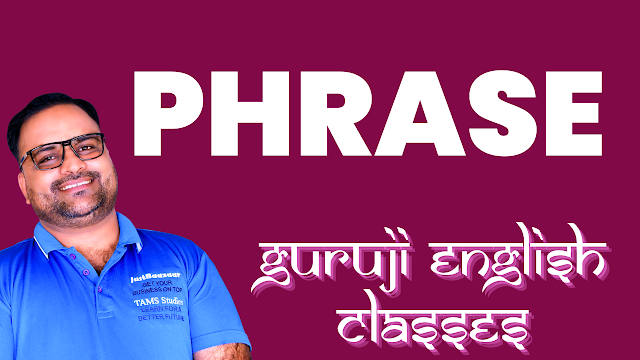Namaste, my dear learners! I am Sunil Chaudhary, your English Guru and the Director of TAMS Studies. Today, we embark on an enlightening journey to explore the fascinating world of phrases. Understanding phrases is crucial for mastering the English language, so let's delve into what they are, the various types, and, of course, some practical examples to deepen our comprehension.
What is a Phrase?
In simple terms, a phrase is a group of words that forms a cohesive unit, but it lacks a finite verb, which is essential for creating complete sentences. Instead, phrases often serve as building blocks in sentences, contributing specific information or ideas.
Types of Phrases:
- Noun Phrases:A noun phrase is a group of words centered around a noun or pronoun, and it acts as the subject or object in a sentence.
Examples:
Verb Phrases:
A verb phrase consists of a main verb and one or more auxiliary (helping) verbs, working together to convey actions or states.
- Adjective Phrases:An adjective phrase modifies a noun or pronoun in a sentence, providing more detail about it.
Examples:
- Adverb Phrases:Adverb phrases modify verbs, adjectives, or other adverbs, providing additional information about time, place, manner, or frequency.
- Prepositional Phrases:Prepositional phrases begin with a preposition and include an object. They provide details about location, time, direction, and more.
Conclusion:
Congratulations, dear learners! You have now gained a better understanding of what phrases are and explored the various types they come in. Remember, phrases are essential components of sentences, adding depth and richness to our language. By recognizing and utilizing phrases effectively, you'll be well on your way to becoming a master of English communication.
If you wish to embark on an immersive language learning experience, I invite you to join us at TAMS Studies, where we strive to nurture linguistic brilliance. Until then, keep practising and expanding your language skills!

Comments
Post a Comment